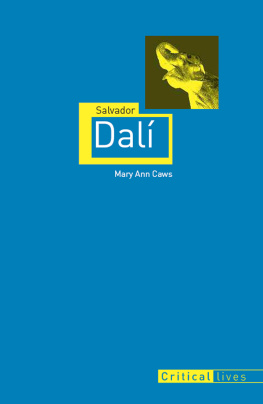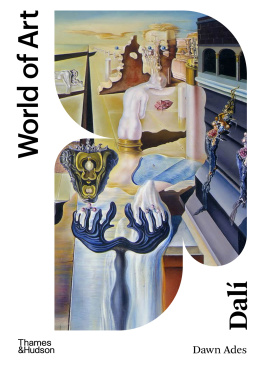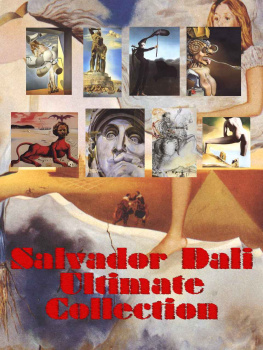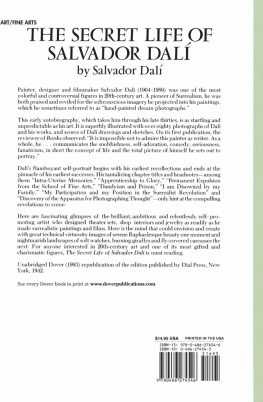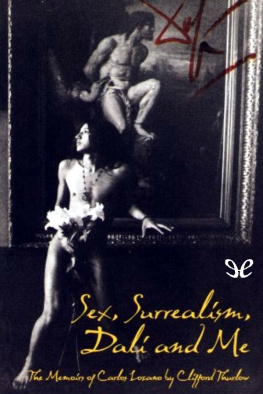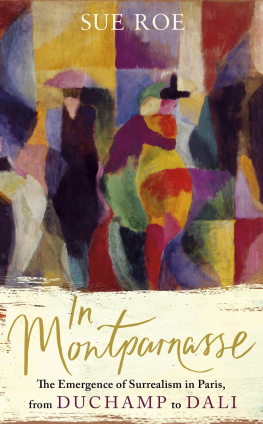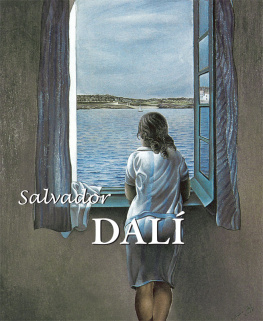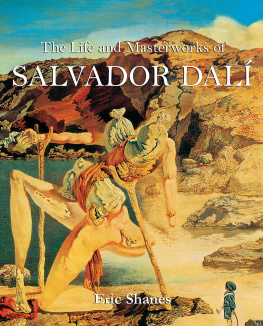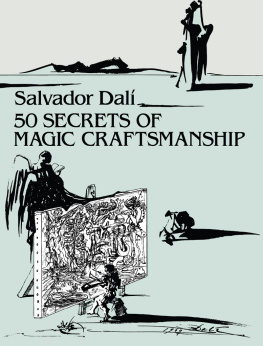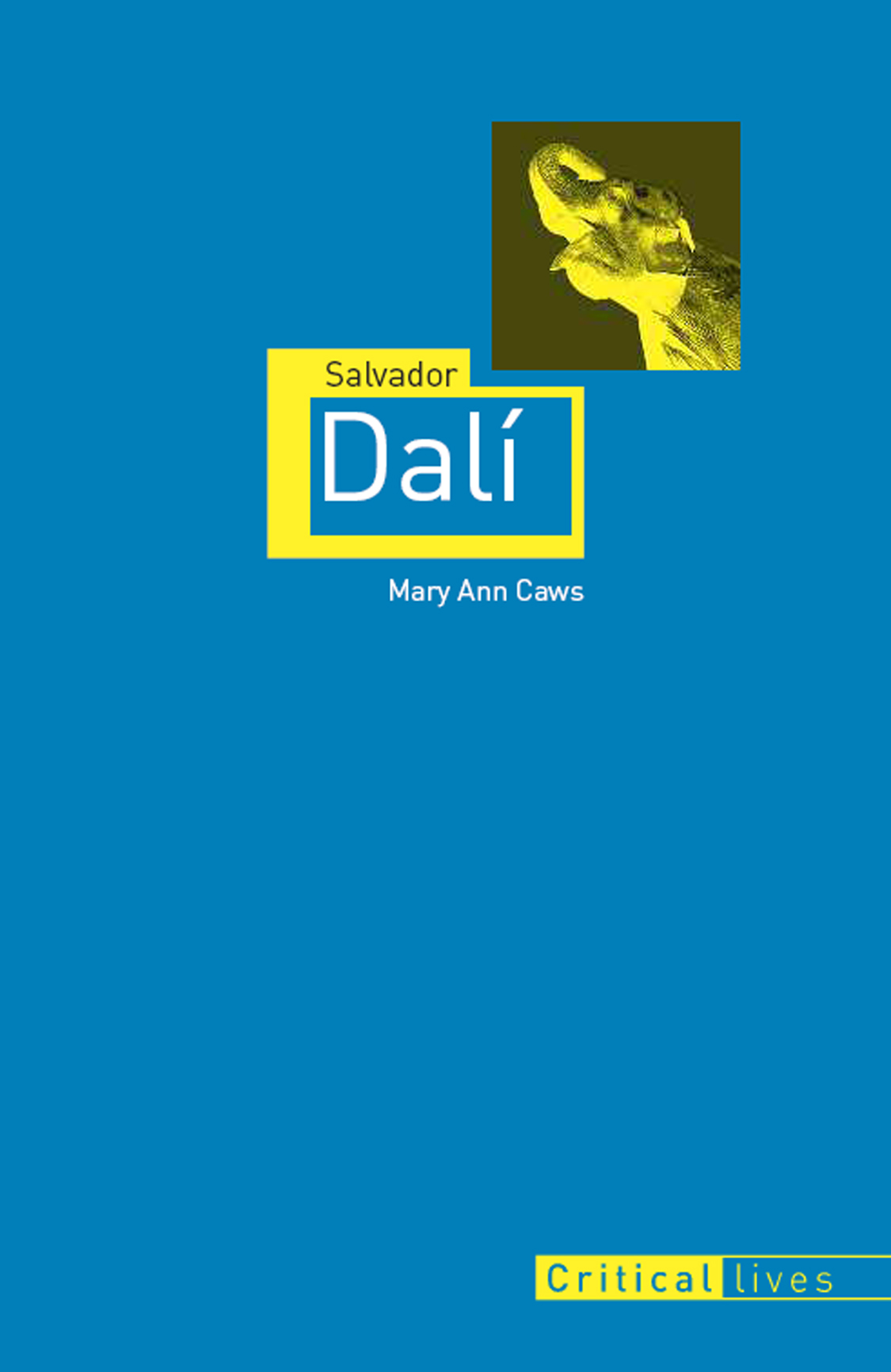Titles in the series Critical Lives present the work of leading cultural figures of the modern period. Each book explores the life of the artist, writer, philosopher or architect in question and relates it to their major works.
Salvador Dali. (Critical lives)
1. Dali, Salvador, 19041989
2. Painters Spain Biography
3. Surrealism Spain
I. Title
Introduction
All things come and go.
Hidden Faces
Challenge
This concise and illustrated biography of Salvador Dal came about in a somewhat accidental fashion. I had researched and written, for the same series, Pablo Picasso, and when I was approached with the invitation to write this, I remembered the delight of that work. A strange delight, to be sure for there were and are, every day, more commentaries on that icon of modernism. So the challenge there was unimaginably steep, it seemed to me at the beginning. But I ended up dwelling at some length on Picassos relationship to the poets with whom my work had been concerned for years, and on the general atmosphere around the Bateau-Lavoir, Gertrude Steins salon, and the South of France. So I felt enlivened by the light that Guillaume Apollinaire and Max Jacob in particular, and even Antonin Artaud and Jean Cocteau (to take two wildly different beings), shed on the life of Picasso, in letters and documents.
During this extensive research at the Picasso Archives in Paris, I came across postcards and letters from Salvador Dal to Picasso, which, in all their outlandish spelling and graphic design, leapt off the page at me... Some sort of prefatory signal, perhaps.
It was always, from the very beginning of my interest in the Catalan painter, the writing that appealed to me. For years I would extol Dals bizarre novel Visages cachs (Hidden Faces) to my friends in English- and French-speaking countries, with nary a reply in return. Surrealism incarnate, I would say, and so rich in details, more so indeed than any other of the Surrealist prose writers. Just look, for example, at the presentation of a foot so carefully observed by a painter-onlooker, plunged by the weight of his helmet into the depth of the scene:
She had slipped off one shoe and placed her bare foot on the other. Baba looked for a long time at this arched foot, with its matt skin, its blue-tinged dimples... free of the stigma of the slightest redness touching or profaning its toes, of which each articulation of each phalanx seemed to rest on the ground beneath Raphaels approving glance, and as on the feet painted by him, the big toe was widely separated from the other toes... Baba looked, and one might have said that the weight of his leather helmet kept his large head bowed forward, obliging him thus to gaze down, so completely did his whole spirit seem absorbed in this contemplation.
Or then look, in this novel again, at a set dinner-table scene:
As if hypnotized, the Count looked at the Lilliputian images of his guests reflected in the concavities and convexities of the silver pieces. He observed with fascination the figures and faces of his friends, the most familiar ones becoming unrecognizable, while reassuming by virtue of the fortuitous metamorphoses of their rapid deformations the most unsuspected relationships and the most striking resemblances with the vanished personalities of their ancestors, mercilessly caricatured in the polychrome images that adorned the bottoms of the plates in which the dessert had just been served...
Exactly as in the famous series of monstrous faces drawn by Leonardo, one could here observe each of the faces of the guests caught in the ferocious meshes of anamorphosis, twisting,
For me, this was the opposite side of the painters soft watches or moustaches, and I was hooked on Dals prose style. And then, last year, I learned about the existence of Dals own original version of his book The Secret Life of Salvador Dal. Not the one his wife Gala had taken control of, but his own language and supremely odd spelling, sprawled across a many-paged book: La Vie secrte de Salvador Dal: Suis-un gnie? Of course I ordered it several times from France; it never came, and I forgot all about my curiosity. However, one day in Bordeaux, I wandered into the bookstore and found, to my immense surprise, the large volume, brought it to the plane, and was captured, seduced in fact, by the strangeness of it all.
So I undertook this work, and have greatly enjoyed the oddnesses of it more the writing than the paintings for that is stranger still. I have tried here to emphasize some of the high points within it, including, of course, the differences between the Gala version and the Dal version of his Secret Life (followed by the Re-Secret Life, or the Diary of a Genius). Other writings grabbed me, and I have followed their traces here.
Everything about Garca Lorca has always fascinated me, and so I place special stress on his relationship to Dal, on the writings by both including letters and poems and the way in which Lorca appears and reappears in Dals paintings. As a worker in the field of Surrealism, I was already bound to be drawn to the Surrealist aspect of Dal, but there was something else. Apart from sketching out the high points of his life and his perpetual involvement in art, and his elaborate formulation of his own appearance and character, I found myself paying particular attention to the ten years of his major work, as the other biographers and commentators on him have done: I am thinking of Ian Gibson, Dawn Ads and Haim Finkelstein. Having lived for many years in the Vaucluse near Robert Descharnes a world-class authority on Salvador Dal and much involved with his business in the later years I was especially interested in all the tensions around the work, the heritage and the person.

